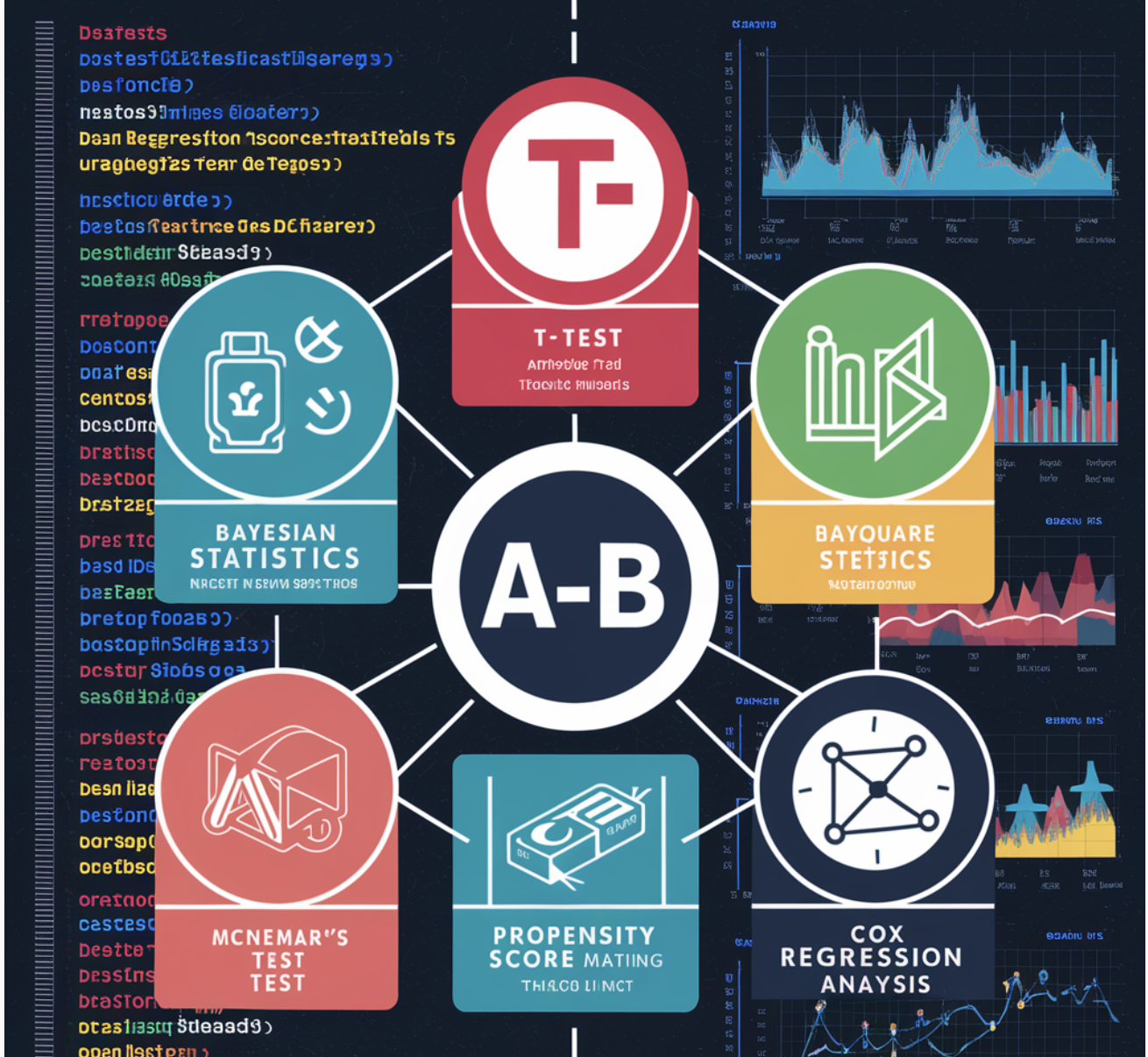
A/B Testing Statistical Methods for Data Science and Data Analysis
Z-Test (Standard Score Test):
When to Use: Ideal for large sample sizes (typically over 30) when the population variance is known.
Purpose: Compares the means of two groups to determine if they are statistically different.
Applications: Frequently used in conversion rate optimization and click-through rate analysis to identify the impact of changes in website elements or marketing strategies.
T-Test (Student’s T-Test):
When to Use: Best for smaller sample sizes (less than 30) when the population variance is unknown.
Purpose: Compares the means of two groups to identify significant differences, useful in scenarios with limited data points.
Applications: Commonly used in preliminary studies or pilot tests with constrained data collection.
Welch’s T-Test:
When to Use: Applicable when two groups have unequal variances and/or unequal sample sizes.
Purpose: Accounts for differences in variances between groups.
Applications: Effective in handling real-world data where assumptions of equal variance do not hold, providing a more reliable test for diverse user groups.
Mann-Whitney U Test:
When to Use: Non-parametric alternative to the T-test; used when data does not follow a normal distribution.
Purpose: Evaluate the differences between two groups for non-normally distributed variables.
Applications: Suitable for analyzing skewed data or data with outliers, such as user satisfaction ratings or non-normally distributed financial metrics.
Fisher’s Exact Test:
When to Use: Preferred for small sample sizes, particularly in 2×2 tables.
Purpose: Examines the significance of the association between two types of classifications.
Applications: Ideal for scenarios with very limited data, such as early-stage clinical trials or niche market segments.
Pearson’s Chi-Squared (χ²) Test:
When to Use: Primarily used for categorical data in a contingency table format (e.g., 2×2 table).
Purpose: Compares two or more groups regarding a categorical variable.
Applications: Widely used in market research and user behavior studies to analyze categorical outcomes.
Conclusion:
These six statistical methods are essential tools in A/B testing, each suited to different data types and research scenarios. Understanding when and how to use these tests ensures accurate and actionable results, driving better business decisions and optimizing performance.
Next Steps:
Applying these statistical methods effectively within your business context can significantly enhance your data-driven decision-making process. You can improve customer engagement, optimize strategies, and drive revenue growth by leveraging.
AI Solutions for Business Evolution
If you want to evolve your company with AI, stay competitive, and use the advantage of statistical methods for A/B testing in data science and data analysis. Discover how AI can redefine your way of work and sales processes, and customer engagement. Explore solutions at itinai.com.
Automation Opportunities:
Locate key customer interaction points that can benefit from AI.
Define KPIs:
Ensure your AI endeavors have measurable impacts on business outcomes.
Select an AI Solution:
Choose tools that align with your needs and provide customization.
Implement Gradually:
Start with a pilot, gather data, and expand AI usage judiciously.
For AI KPI management advice, connect with us at hello@itinai.com. And for continuous insights into leveraging AI, stay tuned on our Telegram or Twitter.



























